The HP Spectre Folio Review: Luxurious Leather Laptop
by Brett Howse on June 7, 2019 8:00 AM EST- Posted in
- Laptops
- HP
- Spectre
- Amber Lake
- Spectre Folio
Design
With a name like Folio, it shouldn’t be surprising to hear that the HP Spectre Folio is the one notebook computer that feels the most like you’re carrying a notebook. The chrome-tanned leather offers an incredible in-hand feel for this laptop, but also feels like it’s going to be very durable. This isn’t the leather of a belt, but more like well-made furniture, with the feeling that it’s going to last for years.
HP offers both the Cognac Brown color of our review unit, as well as a Bordeaux Burgundy, but the styling is far more different than the exterior color. The brown unit ships with a black keyboard and accents, but the burgundy model switches the keyboard deck to silver giving the laptop some incredible contrast.
The attention to detail on the Spectre Folio is impressive. There’s a wonderful stitching on the back of the laptop where the display folds, and under that is a subtle HP logo in the leather itself. The underside consists of the same leather as the rest of the notebook, with a slightly raised foot at the back to give it some stability. Another great touch is when you fold the display back and can see images of the four ways this convertible laptop can be used. That area is likely to be seen very little, since it’s hidden in any use mode, but it’s a great design element to add beautiful imagery there. Opening the laptop up takes some pressure, but the natural gap at the front of the closed laptop where the two leather edges meet makes this a very simple process.
Once it is open, you can see the display, flanked by leather edging. The keyboard deck is also wrapped in leather, meaning if you decided to rest your wrists on the keyboard deck, they get to enjoy the experience. HP has done a wonderful job tone-matching the trackpad as well, so it looks like a truly integrated piece of the design.
Although the design is unique, one area that could be better is the display itself. Although the side bezels are thin and somewhat blend in with the leather exterior, the top bezel is somewhat wide. In its defense, it does house the webcam and IR cameras in the correct location, so that is forgiven. The bottom, however, features a large chin. HP has gone with a 16:9 display aspect ratio, but being a true convertible notebook, this extra space would have suited a 3:2 display so well, and offered better usability in the tablet mode. We’re slowly seeing some 3:2 offerings on the market, but not quickly enough to make this reviewer happy.
HP’s keyboard is light on key travel, but the keys still feel solid. It’s always a compromise on a notebook that aims to be thin, but this one strikes a good balance and is easy to adjust to. The keyboard deck also stretches very close to the edges, and HP offers some extra navigation keys on the right. The keys also offer a couple levels of backlighting with white LEDs.
Subtly tucked up in the top left corner of the keyboard deck is the power button. It’s nice that it’s not a key in the keyboard like some laptops offer, but being a convertible, there’s no real way to power the laptop on if it’s in tablet mode. It’s a bit strange that you have to open the laptop up to turn it on, which is why most convertibles offer a power button on the side.
The trackpad is excellent, offering an incredibly smooth surface, although it is a bit smaller than you may be used to. HP’s Spectre x360, as an example, offers a trackpad that is 37% wider and 14% taller. But, despite the small size, it does work well. If you need to augment your input, you can use both touch, or the included stylus. Unfortunately, the review unit didn’t come with the stylus so I can’t compare it to a Surface Pen or Apple Pencil at this time.
One of the most unique aspects of the Spectre Folio is how it changes from a laptop to a tablet, and the various states in-between. Generally, convertibles tend to fall into two categories. Either it’s a detachable display, or a keyboard that flips around. HP has followed in the footsteps of Acer’s Aspire R13 design from 2015 where the display flips up and then can be set on top of the keys. Unlike Acer which used a U-Frame though, HP’s hinge mechanism is across the back of laptop in the middle and runs the entire width of the display.
It’s a unique take that offers some advantages over the style that Lenovo brought to the mainstream with the Yoga. The main one being that the keyboard is never on the bottom, so you’d never have to set the keyboard on anything, or hold the keyboard like you would with a Yoga-style laptop in tablet mode. It also brings the benefit of being able to use the notebook in an easel mode where you’d still have access to the trackpad if required.
HP uses strong magnets to hold the display in place in both the notebook mode and the easel mode, which means when using the laptop with touch or stylus with the display tipped forward, it’s very sturdy offering no movement at all.
The disadvantage over a Yoga-style 360° laptop is that switching from one mode to another is a bit more finicky than just rotating the laptop, and the hinge perhaps somewhat accounts for the added weight for the Spectre Folio, which tips the scales at 1.49 kg / 3.28 lbs. That doesn’t sound that heavy, but it’s almost half a pound heavier than a 13-inch HP Spectre x360.
Overall, the design is unique, and sets the Spectre Folio apart from every other laptop on the market today. The leather works really well as an external material, offering a great in-hand feel, and it’s a material that should hide any scuffs or nicks a bit better than aluminum would. The different take on the convertible also offers some benefits, and provides an incredibly solid foundation especially in the easel mode.


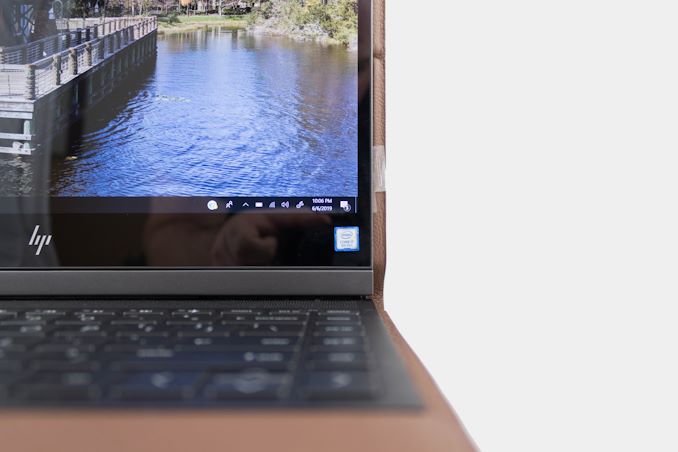
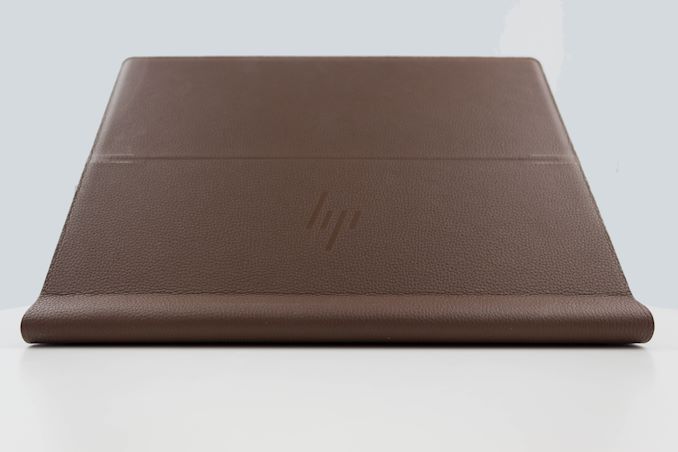
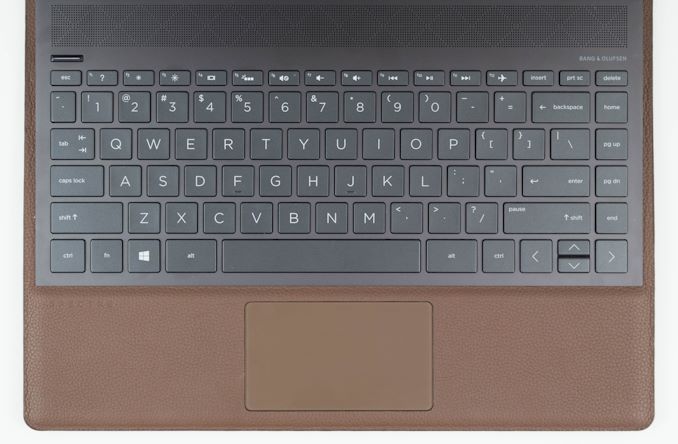
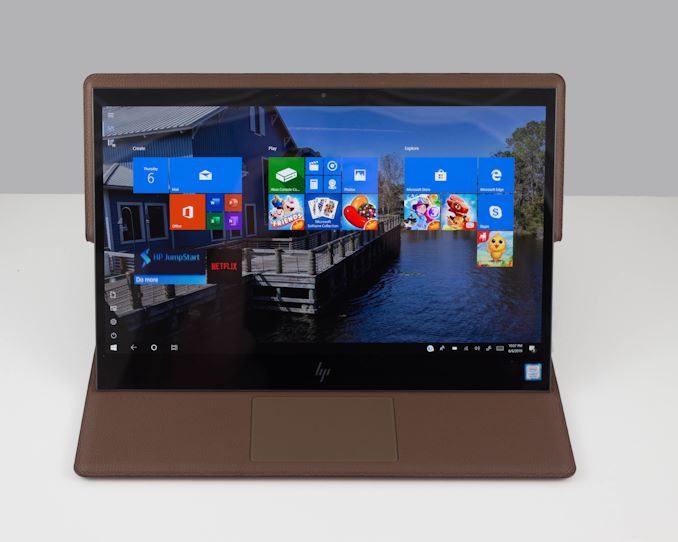
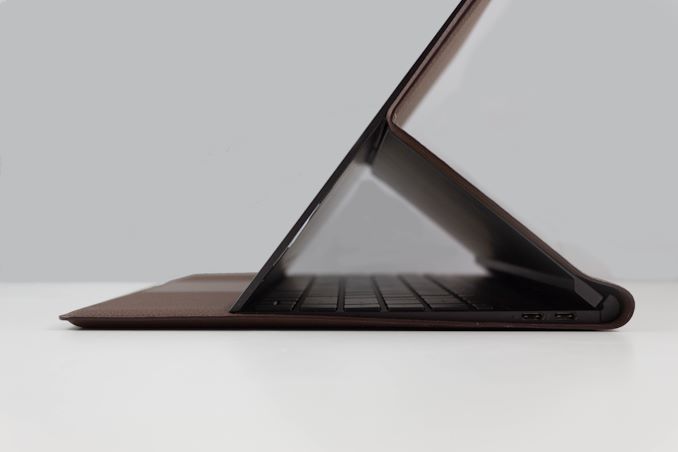








29 Comments
View All Comments
peevee - Friday, June 7, 2019 - link
What 5V/9V? Seriously, dude, stop posting the nonsense and go see a psychiatrist.wilsonkf - Friday, June 7, 2019 - link
Maybe he means USB-C power output? :PHStewart - Friday, June 7, 2019 - link
Please research before you post - Intel change the voltage on Y models from 5V to 9V. But this could also because WIFI 6 integrated in chip in addition Thunderbolt 3HStewart - Friday, June 7, 2019 - link
https://www.anandtech.com/show/14436/intel-10th-ge...bubblyboo - Friday, June 7, 2019 - link
Christ you're dumb. You mean 5W to 9W TDP, not 5V/9V. And it won't mean jack shit since Intel never has correct TDP either. It only means 10nm is a power hog as predicted.Hifihedgehog - Friday, June 7, 2019 - link
HStewart really started to lose his marbles ever since the time Ryzen 3000 was unveiled at Computex. I truly pity him.That said, I am not very hopeful that Ice Lake will be a very good performer at lower power. As Ian found with his review of the Cannon Lake based NUC, the silicon draws more power at a given frequency than previous generations. That leads me to believe their 10nm manufacturing process is particularly leaky. That would naturally explain why they had to raise the power rating on their Y-class/Core M products to a 9W TDP. Even with all the tweaks and workarounds they may have done at the logic level to ease the brunt of their broken process at the silicon level, power draw potentially remains as a serious issue.
Korguz - Friday, June 7, 2019 - link
hstewart.. please do your own research before YOU post.. its watts NOT voltage... as bubblyboo said.. intels cpus rarely run at the TDP they say.. these 5 WATT and 9 WATT cpus will probably run higher then that...Hifihedgehog - Friday, June 7, 2019 - link
Watts, not volts, dude.Thunderbolt is not always active and therefore it and the other features that got pulled into the CPU die shouldn't be contributing to such a high TDP. I am quite skeptical and wary of Ice Lake and I am thinking that their 10nm manufacturing process is leaky just like Cannon Lake was which contributed to its unusually high power draw.
Korguz - Friday, June 7, 2019 - link
HStewart... are you ok ?? did you fall on your head ?? do you have ANY idea what would happen if you put 5 or 9 VOLTS of power into a cpu ?? it would probably fry and die in a firery death... is your blind fan boyism so bad now you can think straightAshlayW - Friday, June 7, 2019 - link
To be fair, and old calculator contains a lot less complex technology than an Ultrathin notebook. So...